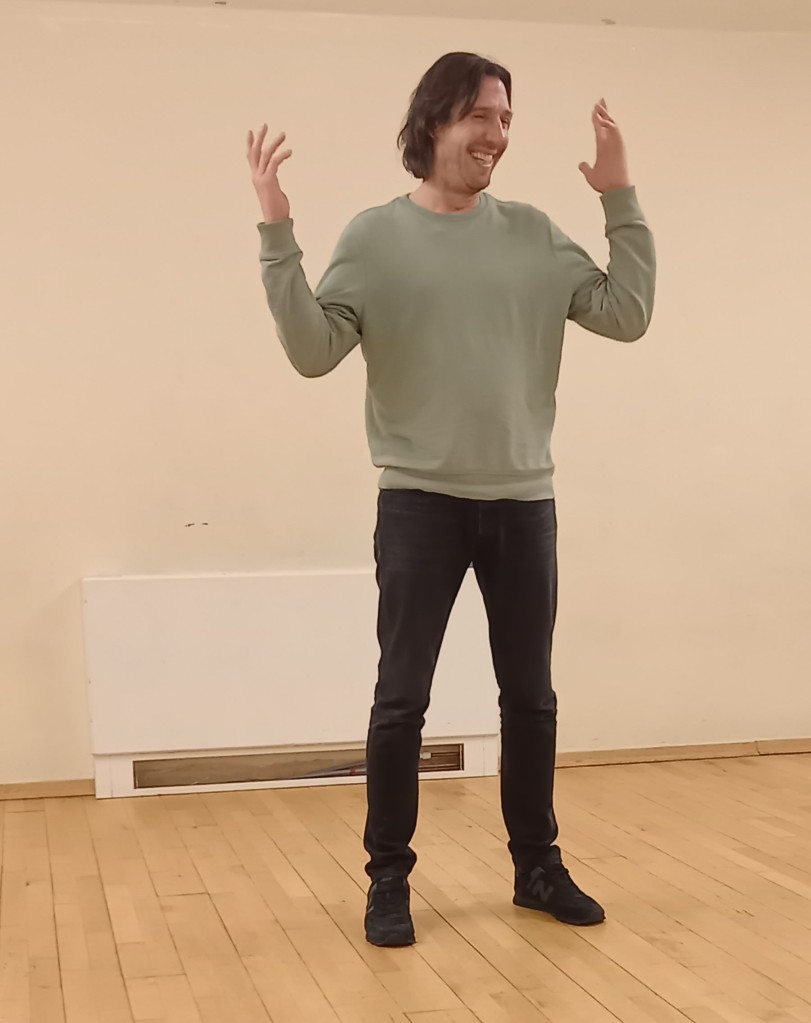
“The whole reason to study (and learn to control) body language is to have that support (rather than undercut) your message.” says Nick Morgan, an American speaking coach. When your body language is truly part of your message, you can have confidence that you will be taken seriously, because your audience will have confidence in you.
Here are some top tips on how to use body language effectively to add a level of credibility and confidence to any speech.
Four types of body language
Nerves can leak out through body language – we’ve all been there with clicking pens, jingling coins in pocket, pent up pacing – so plan for where and how you can channel this nervous energy to positive effect.
You can use body language in four main ways to engage the audience’s attention:
- Descriptive, (eg hands wide apart to show that something is big).
- Emotive/Suggestive, (eg punch the air to show excitement)
- Emphasize, (eg count on your fingers each point you make in a speech)
- Prompting, (eg ask the audience to raise their hand if they have ever….
What do you mean by that?
Are you not sure what to do with your hands when presenting? It’s the same for most of us. Our body language should match our message and being aware of what different gestures convey is a good starting point. Research has shown how people perceive the following gestures:
- Hands in front of you, waist/hip height, palms down: demonstrates certainty and authority.
- Hands in front of you, waist height, palms up and open: shows openness and approachability.
- Hands in front of your chest with fingers steepled: indicates confidence in your message.
- Hands wide in front of you, palms facing each other as if holding a ball: supports the delivery of an idea.
- One hand in front of you, pointing ahead with all fingers: indicates a direct point, made with precision.
- One hand on your heart: shows honesty – of you and your message.
- Count on fingers: indicates each new point to help the listener anchor the point.
Other top tips
Movement: move around the stage with intention, avoiding swaying, pacing, bouncing on heels or standing with legs (and arms) crossed. Your default position is to stand tall and grounded, with knees slightly relaxed and with arms relaxed by your sides. Movement can help to emphasise your message – take a step forward to indicate you’re about to make an important point; a step backward indicates a pause to process a point. You may move laterally across the stage to engage with both sides of the audience or to anchor a point in your speech with a part of the stage. Remember – indicate right and left as the audience sees it (the opposite for you). This is also true for time, the past is often on the left and the future on the right, so you need to start a chronological message on your right side of the stage and move to the left, so the audience will see it as they perceive it.
Facial expression: try to relax the face, take a breath and smile. Throughout the speech make sure that your facial expression matches the tone of the speech. People will respond to the emotion they see in your face.
Eye contact: avoid moving your head like a robot, instead draw a ‘M’ across the audience with your eyes – sweeping smoothly up the left-hand side of the audience, down towards the front and middle, up towards the back right-hand side of the audience, then towards the front along the right-hand side. If there is only a small audience you can make direct eye contact briefly with each person. Just beware the smiling face that appears to love everything you say – don’t be tempted to focus on them, but make eye contact with all the audience equally, including those looking like they’re thinking about something else entirely!

